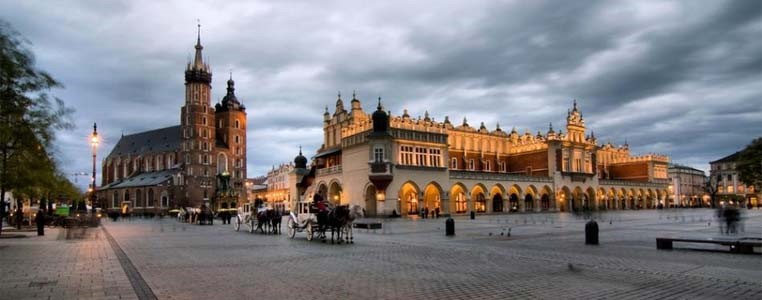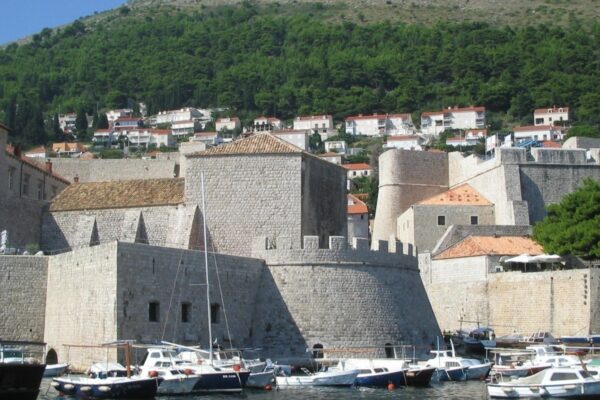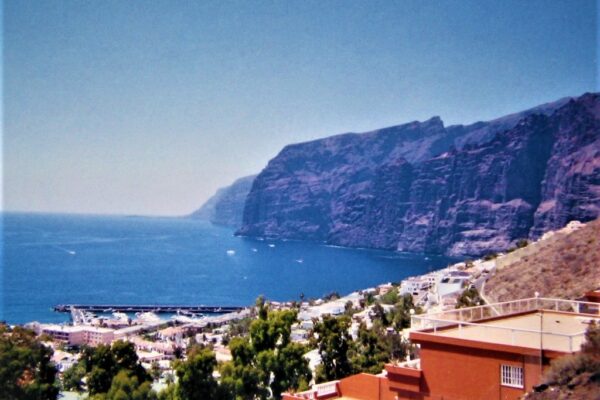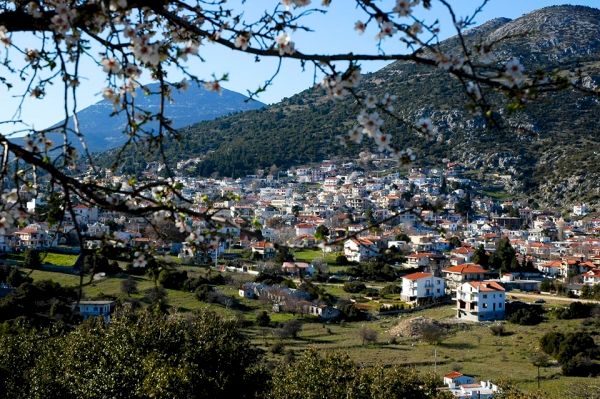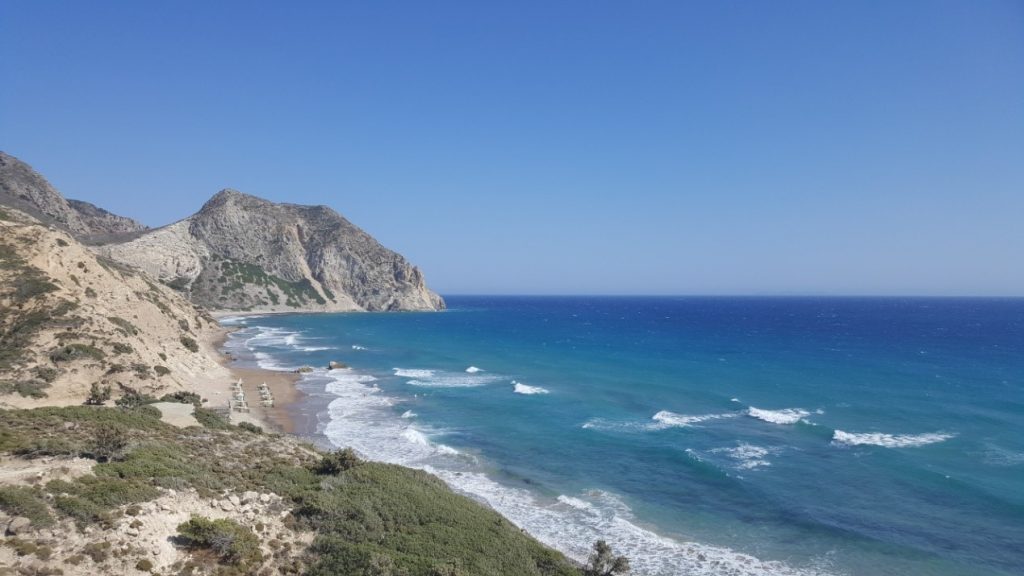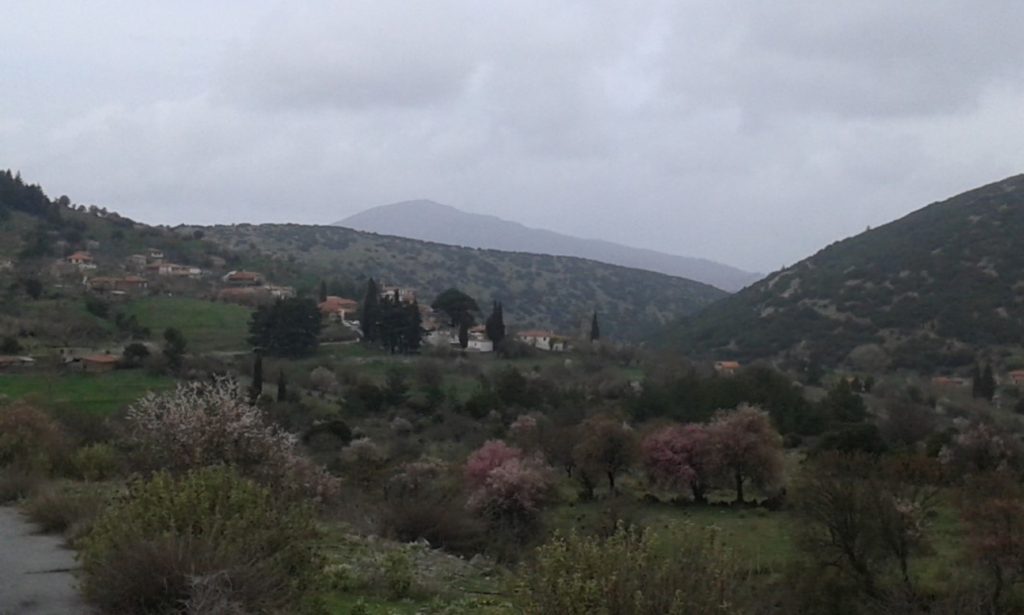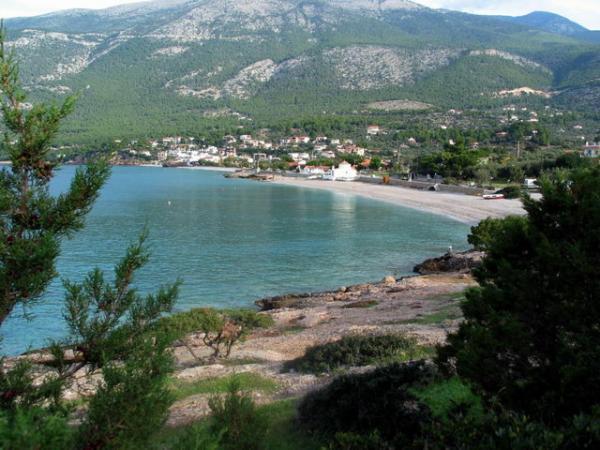Krakow - Warsaw – Auschwitz – Zakopane
INSTRUCTIONS FOR TRIP TO POLAND
- Departure from Athens International Airport "Eleftherios. Venizelos "and arrival in Krakow, in Krakow International Airport – Balice «John Paul II» (KDR).
- Departure from Warsaw International Airport "Modlin"Back in Athens.
(Air tour held by the company Ryanair, with economic fare 19,90 / person / flight).
KRAKOW - OLD TOWN
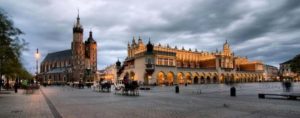
Krakow (Polish Krakow) founded in 7The century. by Prince Crack on the banks of the Vistula River (Polish, Wisla). From 1308 – 1596 was the 1or capital of Poland and the beginning of 14th century. the capital of the Kingdom of Piast Dynasty, based of the Wawel Castle.
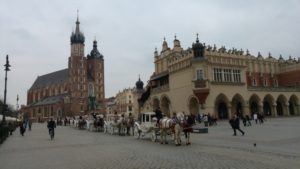
Krakow, in the Middle Ages, developed trade relations with the Baltic countries, Southern and D.. Europe gaining great economic power. It was the capital of Poland (1308 – 1569) with great economic boom. The architecture of the buildings and churches are Gothic with more characteristic the impressive medieval settlement Kazimierz, former Jewish quarter, NW. Old Town (Old Town).
Unlike Warsaw, medieval and renaissance buildings of Krakow remained untouched during the bombings of World War II. Krakow is considered the city with the largest Polish academic and cultural influence. From 1999 It is the capital of the federal state Moldova, in southern Poland.
OR Old Town Krakow, The Wawel hill and Kazimierz It was the capital of Poland (1308 – 1569) with great economic boom, from 1978 belonging to the World Heritage Monuments UNESCO.
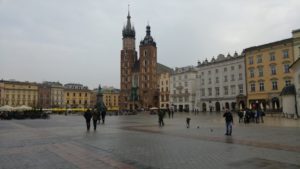
CENTRAL SQUARE RYNEK GLOWNY - CHURCH OF SAINT MARY
SIGHTSEEING KRAKOVIAS
AROUND THE central square MARKET GLOWNY
The Main Market Square or Pynek Glowny It is the largest square in Europe, in medieval town, with a length of 1,200. and width 800 m. It is full of medieval and renaissance buildings and churches and is the city's reference point. The impressive building of the Cloth Hall is in the middle of Central Square and divides into two parts.
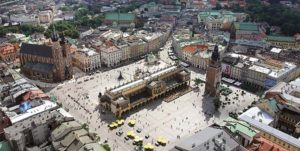
CENTRAL SQUARE KRAKOVIAS
The whole square is pedestrian and cars are banned, except hours feed stores.
What to see :
- Basilica of Our Lady, or Church of Saint Mary or Temple of the Virgin Mary (14th ). The Church of St. Mary is dedicated to the Assumption of the Virgin Mary and stands out from the many elements of gothic architecture and the impressive bell tower.
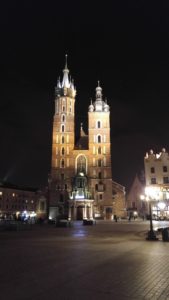
From the tall tower of St Mary's Church, each 1 time sounds a clarion call to 5 notes, the "Hejnal mariacki», or "Hymn of Krakow", in memory of the fanfare of the Middle Ages who warned of imminent danger. The blare stops abruptly because according to legend, an arrow warrior Tatar, when the invasion 13The c., pierced his neck and broke salpisti the blare.
Inside the Temple, the carved altar, work of the German sculptor Know Stross (Polish, Wit Stwosz), unique example of Gothic sculpture throughout Poland. The impressive dimensions trifoliate altar height 5.34 m., width 7.25 m. and consists of forms carved in linden wood. In the central part shows the scene of the Assumption and the side wings there are scenes from the life of the Virgin and Christ. The 1939, during the invasion of the Nazis, Poles evacuation altar in the neighboring town Sandomierz. the Nazis, considering that the project, as the creation of a German, is theirs seized the altar and carried in Nuremberg.
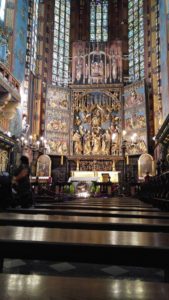
The 1957 the altar returned again in the Church of St. Mary (Pynek Glowny 4).
- Tower of City Hall (15th ), in Central Square, It is open to visitors and has stunning views across the city.
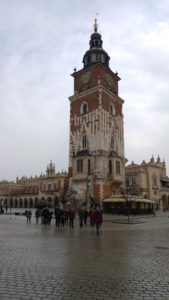
- Cloth Hall or Sukiennice or Cloth Hall (16th ).The Cloth Hall (or in Polish, Sukiennice) is the imposing Renaissance building that dominates the central square of the Old Town. Krakow was an important trade center in the Middle Ages and especially the 15The c., the big boom town. Krakow, as a commercial crossroads, exported to other countries of the rock salt Wieliczka salt mines, Bohn and Klodawa, fabrics and lead and imported spices, silk, skin and wax. Today in a closed market on the ground floor, you will find many souvenir shops and clothes.
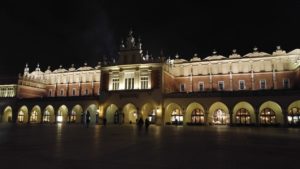
- Gallery of Polish Painting, Cloth Hall. located on 1The floor and you will see works 19th c., like the famous Polish painter, Jan Matejko. Ο Jan Matejko, He was born in Krakow on 24-6-1838 and died in 1893 also in Krakow, At the age 55 years. He studied at the Fine Arts School of Krakow (1852-1858) and from 1873 He was a painting teacher and director of the same Fine Arts. Considered the most important painter in Poland and his works are in the National Museum of Warsaw, National Museum in Krakow, and the Vatican Museum. Another famous Polish painter and student of Jan Matejko was Stanistand islandnski (1869 – 1907).
- Museum of Krakow Local History (Main market 1)

- Church St. Adalbert, worship of European merchants (Mary's Square 31)
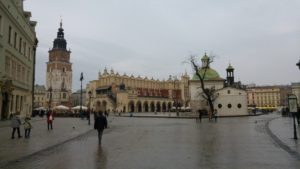
SIGHTS OF THE OLD TOWN NEAR THE CENTRAL SQUARE
A little further north of Central Square, the Church of St. Mary, ascending the the Florianska, there are many sights and modern shops. At the end of the road there is a gate leading to Florian Barbica fort and then to the Bus Station -Stathmo Krakow.
- Gate Florian (14th). It is one of the 8 medieval gates that are left in the Old City.
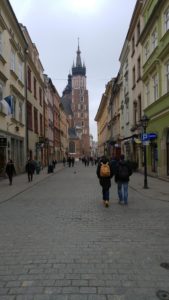
- Church St. Florian’s Church, Catholic Church, type basilica. (Warsaw 1b, 31-155)
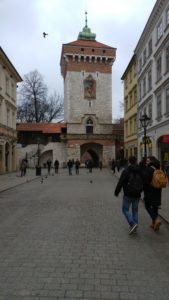
- Barbica (Polish, Barbacan),defensive fort 1498, right on Florian Gate. (οδό Basztowa)
- Museum Jan Matejko House, house - museum of famous Polish painter. (Florianska 41)
- Museum Czartoryski (Pijarska 8), gallery with famous painters, as Leonardo Da Vinci etc..
- Church Thef St. John the Baptist and John the Evangelist Church of St. John the Baptist and John the Evangelist (12th), in Romanesque and Baroque styles. (St. John Street 7)
CLAIMSOSpectators TO THE HILL WAWEL
If you descend south of Central Square, to the street Kanonicza You will be presented with several attractions worth visiting.
- University Jagiellonian. Established by Cazimir III the 1364 and is the oldest university in the country. At the University Museum will find the library with the largest collection of books in Poland and many of the famous collections, as with the previous bullets in the world. Here he studied the Pole Nicholas Copernicus (Polish, Mikolaj Kopernik) (ul Golebia 24).
- Palace of Bishops (Palac Cracow Bishops). Is Renaissance courtyard and the 1963 here lived Pope John Paul II, first as bishop and then as Pope, every time you come to Krakow. From a window of the Palace was communicating with loyal so I will see flowers and candles (Franciscan St. 3).
- Former residence of the German Oscar Schidler (1908-1974). Went down in history as saved more than 1.000 Jews from the Holocaust, transferring them to factories to work. The 1993 Steven Spielberg made the movie autobiography of Oscar Schidler, known as "The Schidler List '. The film won 8 Oscars and gains the S.Spilmpergk donated to survivors and relatives of Holocaust victims. The Oscar Schidler died, very poor, Germany and the stack was transferred to Israel, where is the tomb of.
- Church of Dominican Monks (13th). Old monastery 13th century. with stunning view. (ul Carpenter 12, Square Plac Wszystkich Swietych)
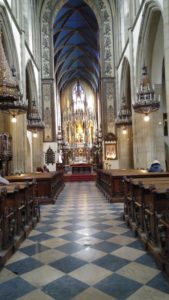
- Church of Franciscan Monks (13th). old monastery, a romance rate remarkably stained glass windows, work of the artist Stanislaw Wyspianski. (All Saints Square 5)
- Museum Wyspianski, dedicated to the famous Polish artist, painter, poet and writer Stanislaw Wyspianski, known by the architectural style of the town of Zakopane (Kanonicza Street).
- Church of the Holy Apostles, Peter and Paul (17th), which is the 1or Baroque Church of Poland. (Grodzka Street 64)
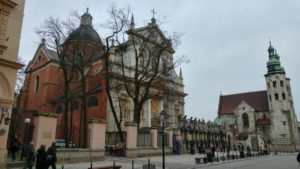
- Church St Andrew (11th), Romanesque. (Grodzka Street 56)
- Palace of Arts (Polish Palac Sztuki). Is an Art Gallery with Art Nouveau decorations and figures from ancient Greek mythology, like the halo of Apollo, on the face of the building. built in 1898-1901 on of architect plans Franciszek Mączyński, according to the building Secession, at Vienna.
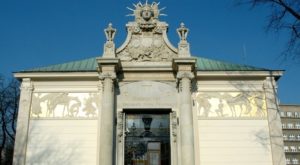
The decoration of the Gallery became one of the most important artists of Krakow. The impressive frieze, designed by Jacek Malczewski and the bronze bust of Jan Matejko, front Szczepanski Square, It is the work of sculptor Antoni Madeyski (Plac Szczepanski 4, Old Town).
ATTRACTIONS IN THE HILL WAWEL
To get to Wawel hill You will head south from Central Old Town Square. Passing through the "royal path", which includes the most beautiful streets of Krakow, the street Grodzka and street Kanonicza, Reach the Wawel Hill.
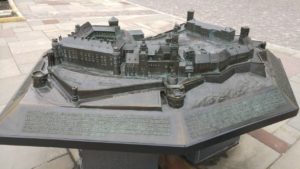
The HILL WAWEL in miniature
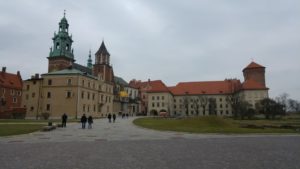
HILL WAWEL
The Wawel Hill is made of Castle Wawel and the Cathedral Wawel, here where they crowned and buried all the kings of Poland. From 1978 belongs to World Heritage monuments UNESCO.
SIGHTS ON THE HILL WAWEL
- Wawel Royal Castle (16th). Built ordered King Casimir III Mega (Polish, Casimir III the Great) It was for centuries the residence of Polish kings. The palace or castle combines medieval architecture elements, Renaissance and Baroque. stand out royal Galleries and Particularly Royal Apartments, with most impressive apartment of Casimir III or Casimir the Great's Room, since the Piast Dynasty.
You will see magnificent rooms with great artwork, rich oriental art collections, ceramics, Meissen porcelain, Flemish wallpaper collections, like the collection of wallpaper Sigismund II Augustus , military trophies and archaeological finds.
Here is the Collection of National Art of Wawel Royal Castle (Polish, Wawel Royal Castle-State Art Collection), with objects 14th century. like swords, spheres etc.. and artwork by 1930 and after.
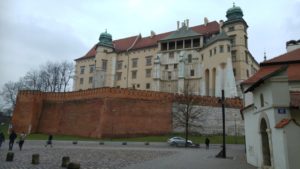
CASTLE WAWEL
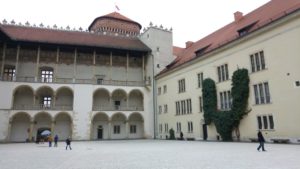
The patio Castro WAWEL
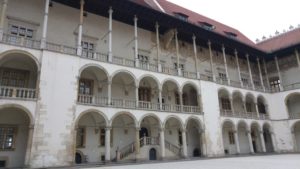
The patio Castro WAWEL
- Cathedral Wawel (14th). The Cathedral is dedicated to Saints Stanislaw and Wenceslaus. It is a basilica, Gothic style with impressive altar. He's got 15 chapels, with the royal tombs and the tower of the bell tower. The tomb of St. Stanislaw is in the Temple.
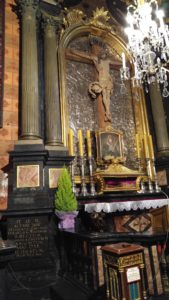
- Crypt St. Leonardou – royal Tombs (11th c.). Build it 1038-1039 and is under the Wawel Cathedral. It is a Romanesque crypt supported by eight columns. You will see the tombs of several kings and queens of Poland. Stands the elaborate carved tomb of King Casimir IV Jagiellon (1427–1492). In a special crypt lies the grave of the national poet and author, Adam Mickiewicz.
- chapel Sigismund (Polish, Sigismund chapel). built in 1539 located south of the Cathedral. It is a masterpiece of Polish architecture and stands out from the golden domes. Here are the "Chapel of the Holy Cross", where grave king Sigismund II Augustus and his wife, Elisabeth of Austria.
- Tower belfry or bellSigismund (Polish, Krolewski Sigismund Bell). It is the largest bell in Poland (11 tons) and the largest of the 5 bells that had Palace. Ring only the memory of the most important events in the country. The bell is considered as one of the National Symbols of Poland.
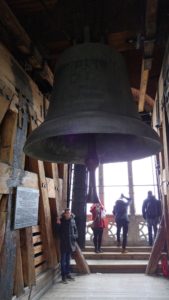
TOWER OF KODONASTASIOU – BELL
- Museum of the Cathedral, with exhibits related to Cathedral (in the hill entrance).
- Treasury – holster, in the Gothic part of the castle or the so-called "Danish Tower" (fee 14th c.).
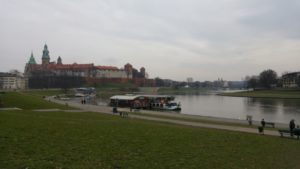
RIVER Vistula- BOATS FLOATING TOUR
- Dragon's Lair (Polish, Smocza Jama) Located beneath Wawel Cathedral and is a limestone cave with archaeological findings. Its length 276 m., depth 15 m. and two inputs, a physical segment and an artificial, along with a well of water 19th century.
- Museum of Japanese Art and Technology or Manggha Center. It is opposite the Wawel Hill, on the opposite side of the Vistula river. The building was completed in 1994, on designs of the famous Japanese architect, Arata Isozaki. Worth seeing the collection Japonica, which was collected by one of the most famous European collectors, the Feliks Manggha Jasienski.
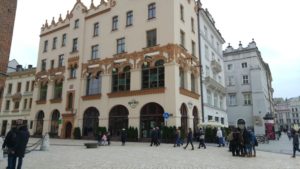
HARD ROCK CAFE KRAKOVIAS
If you find yourself here in 24 June, feast day of St. John the Baptist, at the foot of Wawel Hill and the Main Square, around the Hard Rock Cafe, It is an outdoor festival, the music Festival Wreaths, Live Music, dance, wreaths, garlands etc.. (information wianki.krakow.pl).
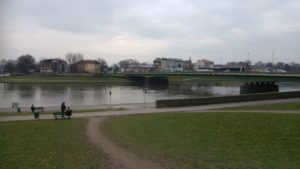
RIVER Vistula
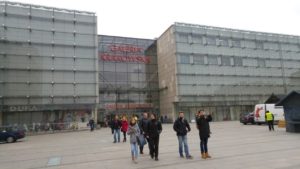
Department store GALERIA KRAKOWSKA
The most commercial street of the city, known shopping chains (B.C. Zara, HM etc. ) It is Pawia street and around. If you are looking a department store, inside the Central Railway Station is the Galeria Krakowska. (Pawia 5, tel. :+48 124289900)
KAZIMIERZ
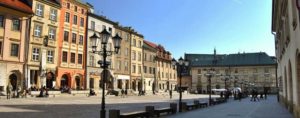
Kazimierz is located south of the Central Square of Krakow, to the Wawel Hill. Founded in 1335 the Grand Duke, Casimir where it got its name. the 15The century. Jews were forcibly expelled from Krakow and found refuge in the Kazimierz district. Because here there was already a Christian community, a wall built, that separates the two districts. With the invasion of the Nazis, the approximately 65.000 Jews were taken to Concentration camp Podgorze, south of the Vistula River.
From this camp, known as "Krakow Ghetto», the Oscar Schindler chose to work at about 1.000 Jews saved from the Holocaust. The rest were transported to the nearby extermination Concentration camp Plaszow.
Today, Kazimierz is a very beautiful part of Krakow, divided into two parts, Christian or western district and the Hebrew or eastern district.
The attractions in the Christian district is, or Church of St. Catherine (14th ), Gothic style with impressive altar, or Church of dashes, or Basilica of Corpus Christi (14th ), Baroque style and Ethnographic Museum, the Old Town Hall, at Plac Wolnica Square. In the Jewish quarter will see the old Synagogue (15th), the oldest Polish, which now houses the Jewish Museum (broad Street 24), the Remuh Synagogue (16th) with the Jewish Cemetery (broad Street 40) and Isaac Synagogue (St. James 25). From 1978 the Kazimierz It belongs to the UNESCO World Heritage Monuments.
DESTINATIONS NEARBY FROM KRAKOW
- CONCENTRATION CAMP AUSCHWITZ – BIRKENAU (AUSCHWITZ – Birkenau)
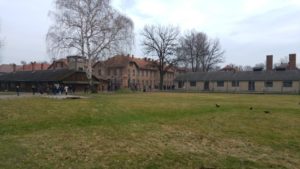
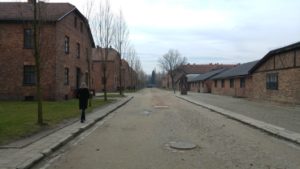
FYLAKIO IN CONCENTRATION CAMP
The Nazis during their invasion of Poland (1939) They have constructed several concentration camps. Initially they were built as places of detention of political prisoners and gradually (from 1940 -1944) as extermination sites – death, mainly Jews, from across Europe.
The Germans themselves considering his "racially superior" decided that "junior" should disappear. In "lower" included, Jewish, Roma, homosexuals, prostitutes, mentally ill people, communists, Polish nationalists etc..
From Greece transferred to the concentration camps of Poland, about 55.000 Jews from Thessalonica (the largest number) and fewer from Athens, Rhodes and Corfu.
the Concentration camp Auschwitz I is near the town of Oswiecim, the Auschwitz II – Birkenau, is located 3 km, west of Auschwitz and Auschwitz III – Monowitz- Hi, about 7 km away from Oswiecim, Monowice in town (German, Monowitz).
Specifically :
- The Auschwitz It was built in 1940, initially as a place of detention of political prisoners and then turned into extermination camp of Jews, who gathered here from all over Europe. Build the abandoned camps and artillery consisted of 2 brick buildings, which was built by the prisoners themselves. Above the entrance of the camp a sign writing : "WORK releases".
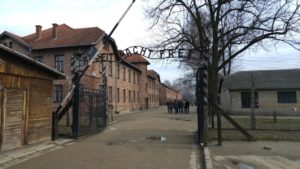
ENTRANCE TO AUSCHWITZ CAMP WITH THE INSCRIPTION "WORK releases"
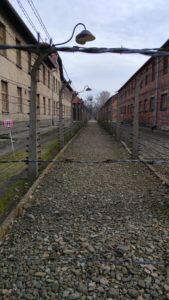
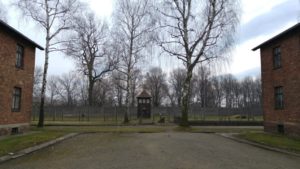
The concentration camp Auschwitz I arriving trains full of prisoners whom stood out as ethnicity eg. Jewish, Polish prisoners, Soviets, Roma.
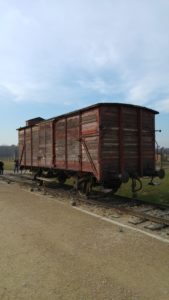
WAGON TRANSPORT DETAINEES
Then the screen was ranked sex, individual men and individual women with children. They were making clothes, the shoes, the prosthetic, the glasses, They cut their hair (where they sent to Germany for the production of blankets, Sweaters etc.), they removed their gold teeth, They took their bags with their belongings (B.C. Koran).
The next screening related to their ability to work eg. able-bodied or not, with prosthetic, ill, homosexuals, prostitutes etc.. Spent by doctors and those who were able to work promoted their factories while sick, Friendly, their prostitutes promoted for killing the gas chambers and then for combustion.
Even those who escaped the gas chambers died of starvation, forced labor, infectious diseases (typhus), individual executions (gallows) and medical experiments. The average age of workers was 3-4 months and at worst 1 month, for those who worked in the mines. Those who could not bear the torture fell themselves on the power lines of the camp fence.
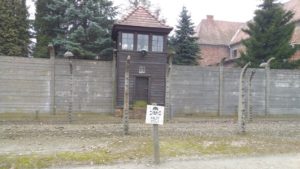
LIVE CABLES
Many prisoners in order to avoid the gas chambers, They agreed to take part in medical experiments under the direction of Eduard Wirths. These experiments, known as medical torture e.g.. experiments became gay in the Nazi effort to "cure" homosexuality, resulting in deformation or permanent disability, wounds and finally indirect death.
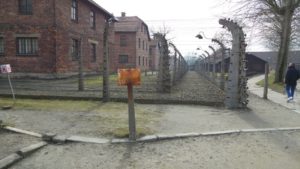
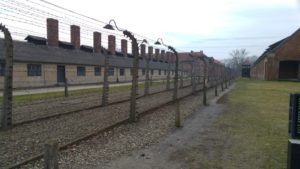

- The Auschwitz II – Birkenau, It was the largest extermination camp of Jews. The Birkenau concentration camp (Birkenau) area had 1.950 acres and could accommodate 200.000 detainees. Had over 300 prison wards, 4 gas chambers, who could fit more than 2.000 people. There were motorized lifts that transported the dead bodies in special ovens.
The ovens could burn 10.000-20.000 dead day and ash channeled in nature eg. bazonan streams, They were forming areas etc..
The Birkenau detail had the following :
- Bunker 1 or "red house," a house with bricks turned on 1The gas chamber (March 1942).
- Bunker 2 or "white house", also a house converted into a gasification unit used by early 1943.
- crematorium 2, Crematorium III, Crematorium IV and Crematorium V, namely 4 crematoriums, who gas chambers with airtight doors and ventilation system through which channels the deadly gas Zyklon B΄, containing cyanide.
- Roma camp or Gypsy Family Camp, created 1942 for Roma workers. Those who survived the hard work and sacrificed 2-8-1944, the Nazis closed the camp. This murder is known to language of Roma, as Porajmos (which means devouring).
the Nazis, upon leaving Poland destroyed most buildings of Birkenau eg. installations, ovens, files with the data of the Jews, to erase the traces of the crimes committed by the 1940-1945.
Today the camp is a huge area demarcated by barbed wire, wherein preserved some combustion furnaces dead, the furnace etc.. According to official sources here killed 1.100.000 Jewish (about 90% detainees) and among other nationalities 150.000 Poles.
CAMP BIRKENAU
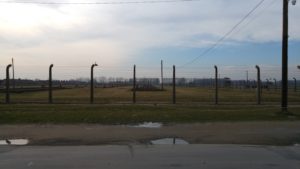
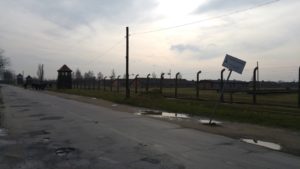
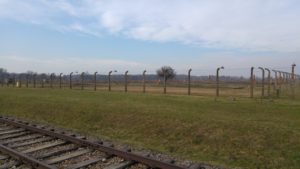
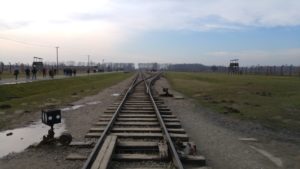
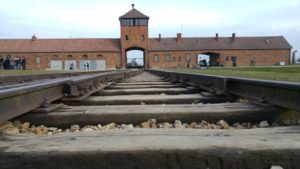
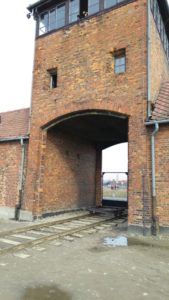
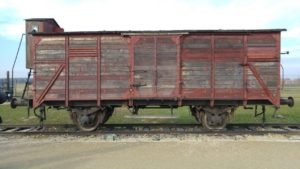
WAGON TRANSPORT DETAINEES
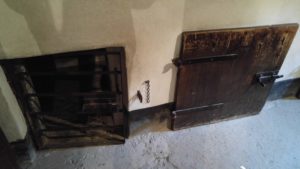
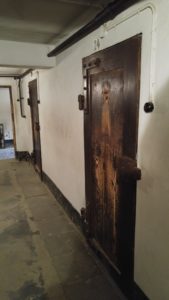
AEROSTEGEIS DOORS GAS CHAMBERS
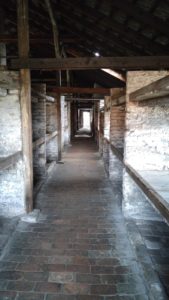
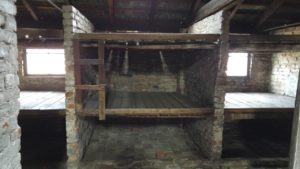
CHAMBERS PRISON – KOITONES TO SPACES 6 KRATOUMENOUS EVERYONE
The Auschwitz III – Monowitz– Hi founded in 1942 to house the laborers - slaves of Buna Werke (Buna Works), synthetic rubber production company (Hi). It belonged to private German group IG Farben, producer of chemical and pharmaceutical substances to which he belonged and the deadly gas, Zyklon B΄, the use of which has significantly increased its profit. The IG Farben after agreement with the Nazis (1941), bought at a low price areas around the Monowitz where then vacated demolishing all homes, mainly owners Poles, without compensation. Because workers had to travel daily 6-7 kilometers to return the factory to the camp, the administration of IG Farben turned the camp Auschwitz III – Monowitz residential area of the Nazis, in prisons – dormitory for factory workers.
A MUSEUMUSCHWITZ
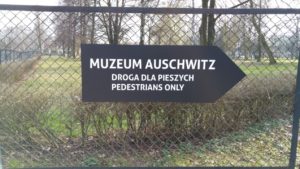
The Auschwitz II – Birkenau It was liberated by Soviet troops and the Red Army in 27 January 1945, at 3:30 pm. and Auschwitz I, 2 hours later.
Today, or 27or January constitutes International Holocaust Remembrance Day.The camps Auschwitz I and Auschwitz II – Birkenau became the state of Poland in State Museum of Auschwitz-Birkenau. From 1979 constitutes UNESCO World Heritage UNESCO. The Auschwitz Museum occupies 12 from 30 prison buildings were left in the camps. That display in the Museum, in various sections, it is found that the allied forces in the premises of the camps (prostheses, bags with hair, bags with the names of victims, clothes, shoes).
In the Visitor center you will see a short film,15 thin, displayed every half hour and refers to the way the release of the camps in 27-01-1945 by Soviet troops (with entrance ticket and over 14 years).
There is a cafeteria, currency exchange, bookstore, Luggage storage room, WC etc.. If you want to tour area is possible in English (length about 3,5 hours and cost 25 sl). You can also buy a small guide from the bookstore and take a tour yourself. To go from the camp Auschwitz I to the Auschwitz II - Birkenau, the (3 km) are internal buses that can take you.
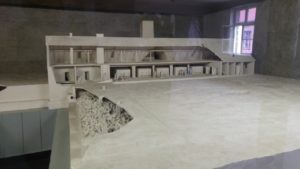
REPRESENTATION from crematoria
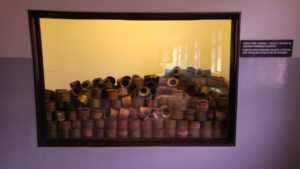
Box containing the GAS EXONTOSIS ZYKLON B
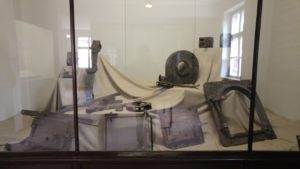
COMPONENTS OF BUILDINGS camps
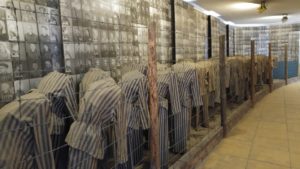
UNIFORMS WORK DETAINEES
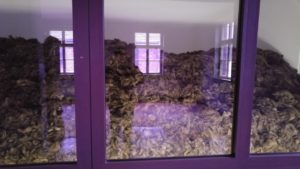
HAIR DETAINEES
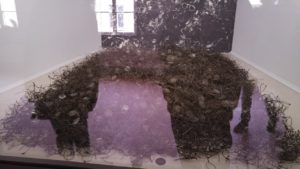
GLASSES DETAINEES
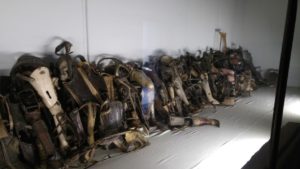
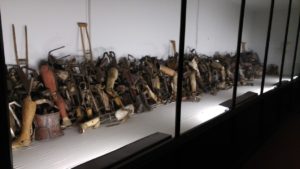
prostheses
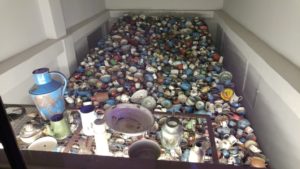
PERSONAL WARE DETAINEES
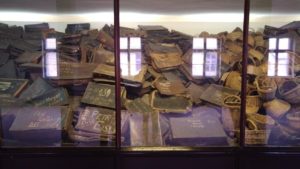
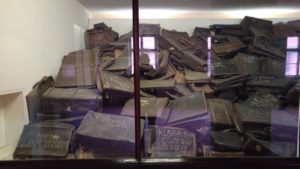
CASES PRISONERS WITH NAME
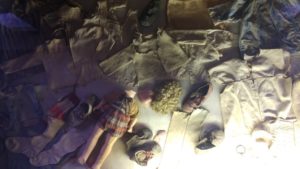
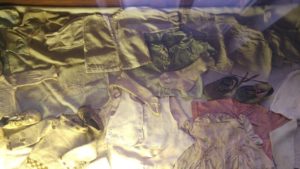
children's clothes
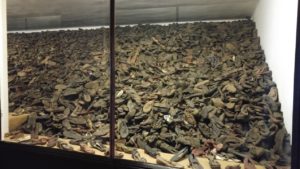
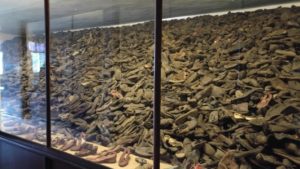
SHOES DETAINEES (ABOUT 80.000 TEM)
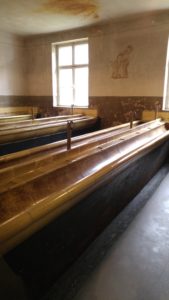
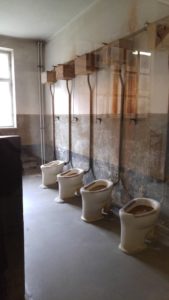
Toilets
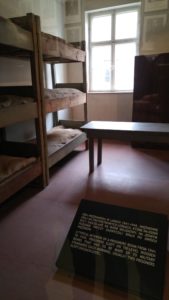
KOITONES
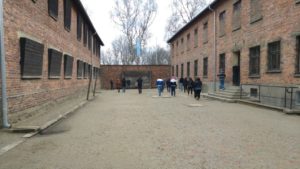
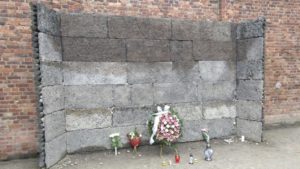
WALL EXECUTING PRISONERS
The stones you see the point of the "Execution Wall" related to the Jewish Burial Customs. When visiting a grave instead of flowers leave the grave, as a tribute to the dead, stone.
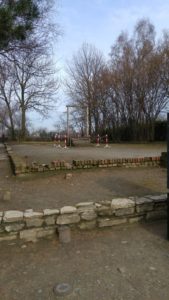
APOGCHONISMOS DETAINEES
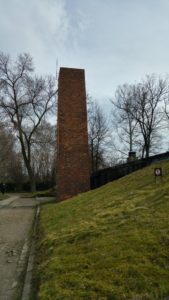
YPSIKAMINOS SITE COMBUSTION
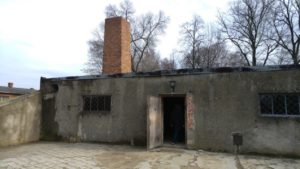
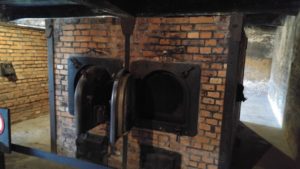
COMBUSTION AREA OF THE DEAD
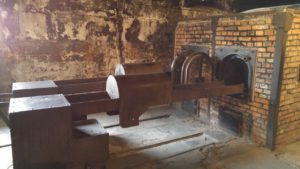
OVENS COMBUSTION DETAINEES
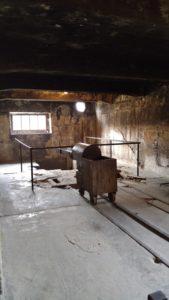
OVENS KAFSIS- TRANSFER STACHTIS
The city Oswieas soon as, located about 60 km west of Krakow and will arrive here by train you will get from Glowny railway station or the train station of Krakow Plawzow (duration 2 hours). Also you can take the bus from the stop ul Bosaska, at the end of the underpass, under the Krakow train station (duration 1 hour 10 minutes).
SALT MINES WIELICZKA
The Wieliczka Salt Mine (Wieliczka) or Wieliczka salt Mine is about 15 km from Krakow and ideal for a day trip. It is an old salt mine mining, by underground, lakes and chambers. The extraction and operation stopped 1996 as they ran out of salt stocks.
In 3 levels below the Earth's surface, you will see many sculptures on religious worship and some objects (B.C. chandeliers), all made of rock salt. There are also wax effigies miners and some tools that show how they work.
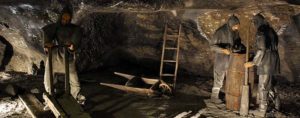
waxwork
In the 3The underground and in depth 101 m. will impress you Chapel of the Blessed King. It is a large church of salt, along with 31 m., width 15 m. and a height of about 11 m., a total of 465 m2. For its completion required 30 years (1895-1927) and took 20.000 tons of rock salt. The church will see the Last Supper Da Vinci, made of salt, many subjects from the Bible and the figure of Pope John Paul II, under full, seated.
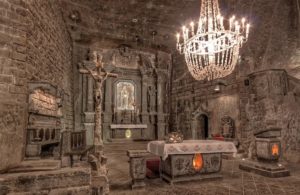
The Kinga (1224-1292) It came from Hungary and Poland became a princess after her marriage to the Duke of Poland, Boleslaw V. O legend says he threw the engagement ring in Maramures mine, in Hungary and it traveled and arrived at the mine Wieliczka Polish, where unfortunately. Since a patron of mine why miners built the statue of St. Kinga to honor her. The Kinga after the death of her husband (1279), distributed throughout the property of the poor and dedicated to God as a nun, the Poor Clares convent in Sandec (Stary Sacz) where, after her death, proclaimed St..
in the chapel, various events such as civil marriages, concerts etc. as space can serve more than 400 people (information, tel. : +48 122787372).
In the salt mine to enter, there is an entrance with obligatory guided tour in several languages eg. English (total cost 90 sl) and takes about 3 hours.. If after the obligatory tour you want to keep yourself, to explore the depths of the mines, You will take about 1 extra time. You should know that the visitation area of the mine is only 1% the total volume of.
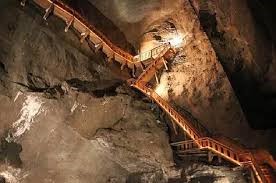
The temperature, internally, varies from 15-16The C even in winter. For the descent there are wooden stairs and the tour should wear comfortable shoes.
Access to the Wieliczka Salt Mine is from Krakow to local bus line that make the way to the region. departing every 15 minutes, from Railway Station – Bus Terminal in Krakow and leave you on the outside (cost 5 sl).
Caution should keep in mind the attitude in which you have to get off as the bus does not stop here but continues his route.
The train is not suitable as the railway station is inside the city but in Wieliczka salt mine is at the entrance to the city will have to walk.
You can also go by private bus where costs are 149 sl includes the carriage, the entrance fee to salt mine and the obligatory tour.
for souvenirs, you can buy in bulk salt (about 7 sl kilo) or in bags, from the stalls of vendors from outside. To Wieliczka Salt is white, but here you will find colored salt from the K salt minelodawa (pink and blue). The Klodawa is 100 km from Warsaw and an operating mining salt mine is permitted to visit to see how the salt mining.
The Wieliczka Salt Mine is included in UNESCO World Cultural and Natural Heritage of UNESCO.
FOR SKIING IN ZAKOPANE - IN THE MOUNTAINS TATRA
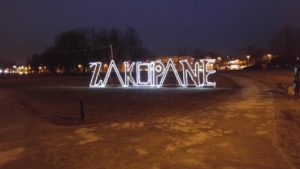
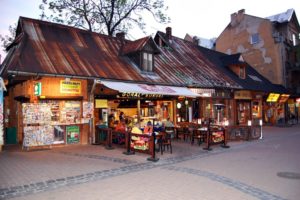
The Zakopane (Zakopane) Located at the foot of Mountains Tatra and is the most popular winter resort of Poles. developed by 19The century. as a meeting place for intellectuals and artists of the country. Then it evolved as the most famous ski resort of Poland because here are conducted most winter sports.
Krakow is about 100 km and is suitable for one-day excursion.
Even if you do not ski worth coming to town, admire the architecture of buildings, known as Style Zakopane, initiator of which was the famous artist Stanislaw Witkiewicz (1851-1915).
The main pedestrian, the Krupowki, It is full of cafes, restaurants, banks and shops. You can visit Museum of the Mountains Tatra, with folklore and ethnographic elements of the area and Museum of Style Zakopane, in Villa Koliba (Street Koscieliska 18), a building 1892 designed by Witkiewicz.
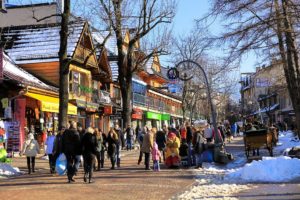
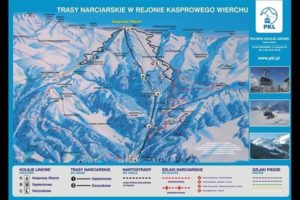
For the funicular, in the Kuznice, You will take the local bus from Zakopane (distance 3 km). The cable car takes you up to the top Kasprowy Peak (1.985 m.). The simple route reaches 936 m. and the duration is 20 minutes (you can remove and return ticket, duration 2 hours).
At the end of the road Krupowki The cable car takes you to the top of the hill, Gubalowka (1.126 m.) where there is a café and the view is stunning.
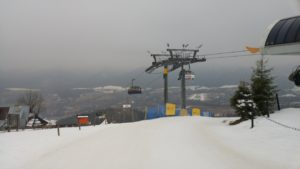
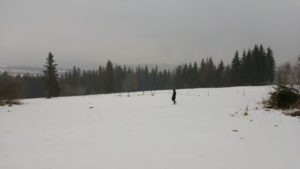
the Mountains Tatra They are 100 km Ν. Krakow is the largest mountain range in the Carpathian Mountains. The Tatra Mountains have more than 20 mountaintops, about height 2.000 m. with the highest peak Rysy (2.499 m.). Here there is the National Park of the Tatra Mountains, with an area of approximately 212 m2.
Access to Zakopane accomplished by a local bus from Krakow (duration 2,5 hours, cost 19 sl) or by train exress, also from Krakow (duration 3,5 hours). in Zakapone, issuing tickets for local bus, you go on the street ul Kosciuszki 23, (information, tel. : 666 396 090 and issue tickets tel. : 18 20 144 53) and departure to Krakow, the Bus Terminal, in ul Chramcowki 35, Zakopane (Building Railway Station Zakopane, PKP). The bus number from Zakopane to Krakow is No. 7.
For private bus Szwagropol, You will go to ul Kosciuszki 19a, (tel. : 669 060 060 and tel. 18 20 153 28 ticketing agent). Information on the railways: tel. : (42) 19436 – for subscribers of mobile networks.
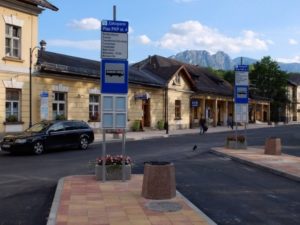
ZAKOPANE
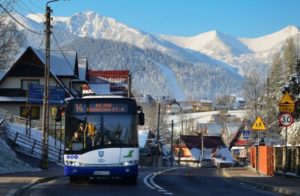
WADOWICE
The International Airport of Krakow is the name of Papa John Paul II , former Charles Wojtyla (Karol Wojtyla). The Karol Wojtyla was born on 18-05-1920 in Wadowice, 50 km ΒΔ. Kraków was the 1th non-Italian pope in recent 455 years. he died on 02-04-2005 and was declared a Saint by the Catholic Church, at 27-04-2014. This was a great honor for Poles who gave his name to the Airport Krakow and created souvenir with his face (you will see cards, dishes, mugs, dolls with the face of the Pope etc.).
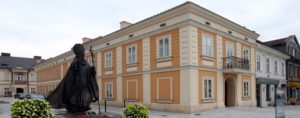
MOUSIO John Paul II
In the city Wadowice, the birthplace of Pope, the house he was born and raised renovated and converted into "Museum John Paul II». You will see known as "The family home of Pope John Paul II – papal Museum» (Polish, Family home) (ul Koscielna 7). In the museum there is a permanent exhibition with photos, pictures, belongings Pope, B.C. of the rosary, etc.. Each year, from the 18 May – June, beginning celebrations to commemorate the birth of Pope (www.domrodzinnyjanapawla.pl).
WARSAW - OLD TOWN
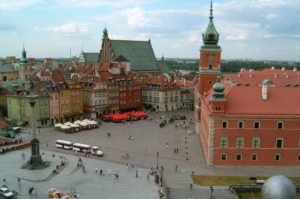
CENTRAL SQUARE MARKET
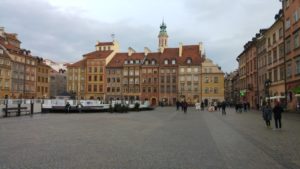
Warsaw (Polish, Warsaw) founded in 1313 A.D. when the Grand Duke of Mazowieckie, Wladyslaw IΙ, settled here. Then all subsequent Dukes of Warsaw Mazowieckie used as their headquarters, until 1526 when the Duchy was incorporated into the Polish-Lithuanian Commonwealth.
The 1596, because of its position, near Krakow and Vilnius, the capital of Lithuania, It became the seat of the Polish-Lithuanian Commonwealth and the Crown of the Kingdom of Poland, with the king Sigismund III.
Subsequently,when Poland became independent (November 1918), Warsaw remained the capital of the Republic of Poland.
the 18The c., during the biggest economic development of Poland, Warsaw as the capital and commercial crossroads was a very rich city. Acquired impressive buildings and churches, Renaissance, manifesting wealth and prosperity of the inhabitants.
During World War II, the German invasion of the country (1939), the 45% the buildings of the Old Town destroyed by bombing.
The 1944, between August and October, becomes the "Warsaw Uprising», an unequal struggle between partisans of the Polish resistance and powerful German troops, consistently
building that was left of the bombing, now almost completely destroyed. Above the 90% the buildings of Warsaw Old Town was complete destruction.
The buildings and churches that exist today around the Main Market Square, They have been reconstructed at a rate of season 18th century.
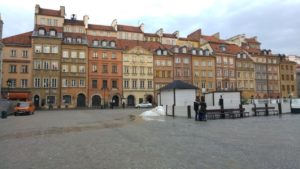
OR Old Town and Royal Palace of Warsaw from 1980 belonging to the UNESCO World Heritage Monuments.
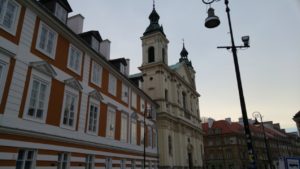
SIGHTS OLD TOWN OF WARSAW
H «Vassiliki Street» (Trakt Krolewski) a path, length 4 km that includes the streets Krakow suburb, Novy World and Aleje Ujazdowskie. H route includes many attractions and starts from the Royal Palace, at the main square (Market) and terminates at the Lazienki Palace.
- Royal Palace or Castle Warsaw (16th ). It was the official seat of the Polish monarchy and today is National Museum. After the destruction of Warsaw, Castle was rebuilt to the original design. (Central square)
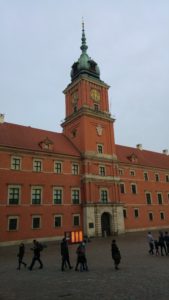
ROYAL PALACE
- column Sigismund. Column height 22 m. with the statue of King, Sigismund III Waza, built by his son, Wladyslaw IV Vasa, to honor his father (Castle Square, opposite the Royal Palace, at the main square)
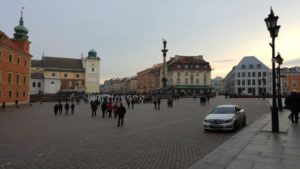
ΣΤΗΛΗ SIGISMUND
- Statue Siren - Mermaid (Warsaw mermaid) (1855), It is the symbol of Warsaw, at the main square. According to legend, one day, Prince Ziemomysl, He lost in the dense forest that existed in the Mazowsze region. Suddenly the river Vistula appeared where a mermaid holding the hands of an arrow. The Mermaid, targeted by the arrow in one direction and said to the prince 'follow my arrow and will find people who will give you refuge, food and help you find your way back home"And then lost in the river.
Prince Ziemomysl followed the path of the arrow and came to scanty hut of a fisherman. He found food to share with them, but the good-hearted fisherman and his wife I welcomed him, without knowing who was really. There he played with his children Fisherman, The Twins Wars and Straight, that made him feel glad you had on earth of both good people. Leaving, after he revealed what was promised to set up a big city, the position was this village and put the fisherman to the rule.
Although no one saw the Mermaid statue is placed prominently on the Central Square of Warsaw (Polish, Warszawa from the names of the children of the poor fisherman twins).
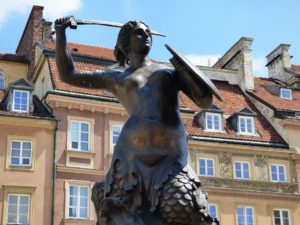
- St. Anne Church Warsaw (1454), with strong Renaissance and neoclassical elements (Krakowskie Przedmiescie Street 68)
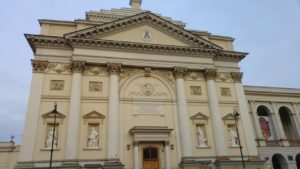
- Cathedral of Warsaw or St. John (15th ). He is dedicated to St. John the Baptist, Gothic with Baroque elements on the face. It was razed by the Nazis and rebuilt by the efforts of Warsaw residents. In the same place, Oldest, He was Chapel of the Castle of the Dukes of Mozavias. (Kanonia street 6)
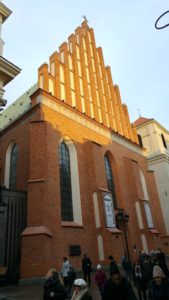
- Barbican Warsaw (Polish, Barbacan), semicircular fort City, Gothic style .(Nowomiejska street 15-17)
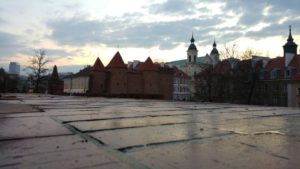
ΟΧΥΡΟ BARBICAN
- Presidential Palace - Statue of Prince Jozef Poniatowski, office of the President of the Polish Republic from 1994. (Krakowskie street)
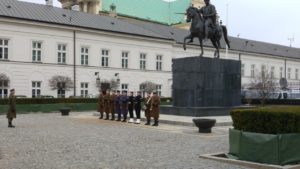
PRESIDENTIAL PALACE – Jozef Poniatowski
- Park - Gardens Lazienki, former summer residence (18th ) King of Poland, Stanislaw August. Tο 1918 renamed the Park today attracts tourists as well (Agricola Street 1)
- Palace Wilanow (Polish, Wilanow Palace), It was built in the last quarter of 17th century. for the king of Poland, Jοhn III Sobieski (6 km from Lazienki Park, Street Drilling 1)
- appealone Martin’s, (1356) (Piwna 9-11)
- Jesuit church (Polish, church Jezuitow)
Build it 1609-1626 by King Sigismund III Waza.Katastrafike the Second World War and rebuilt between 1950-1973. The impressive sculpture in the entrance door is the Igor Mitoraj (1944-2014), famous Polish sculptor and painter (next to the Cathedral of St. John, Dluga street 13-15)
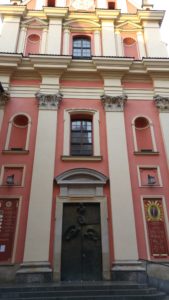
Jesuit Church
- statue of Adam Mickiewicz, National poet and writer in Poland. (Central square)
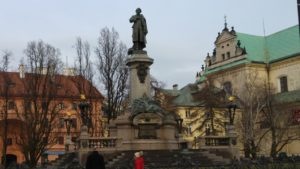
Statue of ADAM MICKIEWISZ
- Museum of Warsaw Uprising (Polish, Warsaw Uprising Museum). Founded in 1983 but opened the 2004, when 60or anniversary "Warsaw Uprising " (1944) (Grzybowska 79).
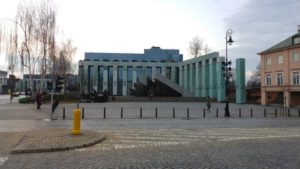
- Marie Curie Museum (Museum of Μaria Sklodowska – Curie). Founded in 1967 and is dedicated to the life and work of Polish physicochemical Sklontovska Maria - Curie (1867 – 1934). Marie Curie was born in Warsaw where, together with her husband Pierre Curie after investigations, discovered radium and polonium (named in honor of the origin of the Curie). Awarded the Nobel Prize Physics (1903) and Nobel Prize Chemistry (1911), (Freta 16, new Town, en.muzeum-msc.pl, tel. : +48 22 8318092)
- Visit Church of Theotokos or St Mary's Church. The church was destroyed in World War II and rebuilt between 1947-1966 in Gothic style. Summer in the courtyard of the church given concerts and theatrical performances (opposite the Marie Curie Museum, Przyrynek 2)
- Frederic Chopin Museum The museum is housed in the Palace Ordynacki and is dedicated to the famous Polish composer, Chopin (1810-1849). Chopin was born in Poland, but died in Paris, where is the tomb of. After his desire his heart has been transferred to Poland (Okolnik 1, tel. : +48 22 4416251-252)
- Palace of Culture and Science (Polish, Palace of Culture and Science – Palace of Culture) Is a high-rise building built in 1955 the Soviet architect Lev Rudnev, in Stalinist architecture. Called "Eighth Sister" as a continuation of the postwar Stalinist skyscrapers in Moscow team, known as the "Seven Sisters".
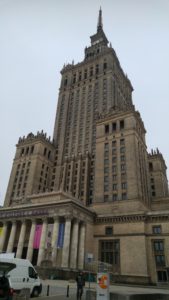
His height 237 m. and is the tallest building in Poland and 8The in Europe. The building currently operates as an exhibition center and office complex. features 8 cinemas, 4 theaters, 2 Museums, the Museum Development and Technology Museum, the University Collegesinm Civitas, bookshops and a large pool.
THE 30th Floor height 114 m. It is open to the public and is a tourist attraction. You can climb to see the entire city from above, through binoculars there on the balcony (watchtower) or sit in the cafeteria (o coffee costs about 12 sl)(Parade Square 1).
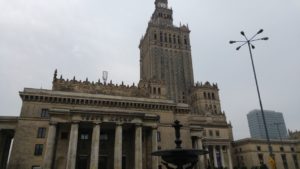
PALACE OF CULTURE AND SCIENCE
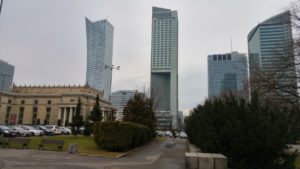
Skyscraper NEAR THE PALACE OF CULTURE AND SCIENCE
- National Stadium Warsaw. It is built next to the Vistula River side of Praga district. seats 58.000 spectators and was built to host the EURO 2012, where the old Stadium 10th anniversary. It has a retractable roof (opens in 15 minutes), showrooms, conference center and offices. It is particularly impressive at night by the side of the Central Square Zamkowy. From the Palace of Culture and Science will arrive in less than 30 minutes.
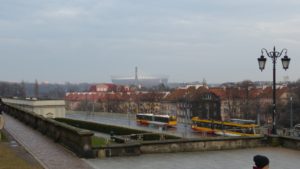
RIVER Vistula – NATIONAL STADIUM WARSAW
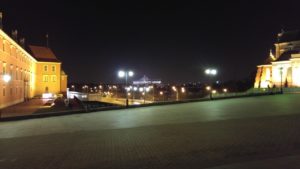
THE NATIONAL STAGE floodlit FROM THE CENTRAL SQUARE WARSAW
NEW TOWN WARSAW
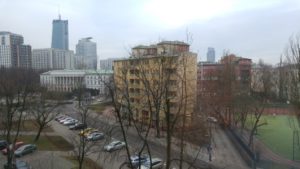
The New Town of Warsaw (New town) It has large avenues, wide sidewalks, plazas and skyscrapers. The most famous avenue is New World, length 1 km, in the extension of Krakow Przedmiescie, from the Main Market Square. full of shops, cafes and restaurants is the starting point for the cultural journey in the city.
DISTRICT PRAGA WARSAW
Quarter Praga - Polnoc is working and the most popular district of Warsaw , on the right bank of the Vistula. The area escaped the bombings of World War II and the destruction during the Warsaw Uprising, that's why you will see many buildings of this era. For this reason he was selected for most shooting-winning 3 Polish film Oscar, Roman Polanski, "The musician, Wladsylaw Szpilman and refers to the way to survival of "Warsaw Ghetto».
At 19-4-1943, to attempt extermination of the Jewish population from Nazi troops rebelled Jews from the Warsaw Ghetto, known as the "Uprising of the Warsaw Ghetto," in response to their transfer to Treblinka Extermination Camp. This resistance ended when the wretched poverty and hunger rebels were crushed by the Nazis, commanded by Jürgen Stroop.
The "Uprising of the Warsaw Ghetto" was the largest uprising of Jews during the Holocaust.
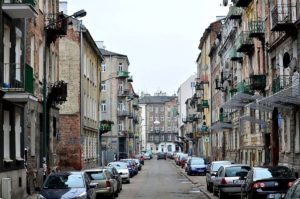
DISTRICT PRAGA-POLNOK
In the former factory of Polish vodka "Connoisseur», in a renovated building 19th c., Neo-Gothic style with red bricks, will open the gates of the "1The Museum of Polish vodka» (Spring 2018) with a bar-restaurant and spectacular city views, by 3The floor of building (the streets Zabkowska 27-31, Markowska, Praga - Midnight).
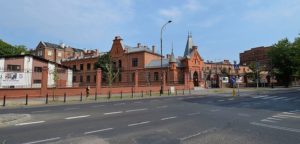
FACTORY – MUSEUM OF THE POLISH VOTKAS
USEFUL INFORMATION TO MOVE IN POLAND
- The currency of Poland is the zloty (sl) or PLN divided into 100 cents (gr), are coins. the zloty (sl) circulating in bills 10, 20, 50 and 100 or in currencies 1, 2 and 5 sl. H of the euro in the zloty is : 1€ = 4,18 sl. The exchange offices have the name "office».
- Poles are quite helpful with tourists and can help you.
- Tickets for local buses can be purchased from vending machines, either inside the bus, or attitudes (in most). Tickets have different prices depending on the duration. For example, for length of stay 20 thin, in the bus, The ticket price is 3,40 sl while for longer eg. 75-90 minute price is 3,80 sl.
Great attention to the expiration of the duration of your ticket as it can get controller (customary). The controller is an apparatus which passes the ticket, and indicates whether it is expired or not. If it has been the time for which issued, the fine will take your extra time is X 40. the auditors, who speak good English, is very formal and strict with tourists and do not accept excuses as they believe that "all the tourists themselves say»! The fine should pay on the spot in order to continue or get off the bus.
- Krakow has no metro but tram, with very good network.
The city can be explored, very easily, by foot. If you do not want to walk to see the sights, for browsing, you can rent a carriage with horses from the Main Square of Krakow (duration 30 minutes and costs 150 sl).
- The River Vistula is full of boats, for a cruise around the sights or enjoying a drink in the bar floating.
- Warsaw is not allowed free parking in the main streets, without a ticket, Monday - Friday except weekend where the parking is free. For free parking every day there are outdoor areas, spaces of hotels, the area outside the Palace of Culture and Science, etc..
ACCESS TO KRAKOW-WARSAW
- Central Railway Station (Warszawa Centralna Railway Station) Bus Station-terminal (Central Station -PKS) Warsaw is easily accessible from the city center. You can reach the Metro Centrum, by tram, bus and taxi. The station is very fashionable, with many shops, brown, Luggage storage, WC etc.. Outside the station you will find the impressive department store Zlote Tarasy, IKEA, the Marriott hotel, Many restaurants and coffee.
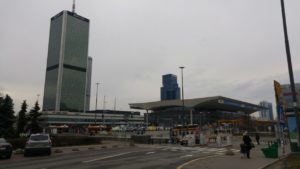
CENTRAL RAILWAY STATION & BUS STATION WARSAW
- Central Railway Station (PRP) Bus Station-terminal Glowny Krakow is very close to the Old City on foot (Railway Station Square).
To get here you will follow BA course. from the central square of the Old Town, after Florian Gate. To enter the station you can use the input from the Galleria shopping store. The station is ultramodern and fully organized with trains and buses on the same site.
- From Krakow to Warsaw and back you can take the train, Express InterCity Premium (EIP),with a journey 2 hours 50 minutes. Trains leave exactly on time defining the ticket and make only 2 stops, or 1or a regional station and 2or the terminal. On the route offered free water, coffee or refreshment and the train offers free Wi-Fi. Tickets can electronically edit and use in Poland (www.polrail.com).
- H Warsaw has 2 international Airports, International Airport "Fryderyk Chopin"International Airport"Modlin». Caution, the airline Ryanair uses «Modlin», which Warsaw is about 45 minutes and on the way to Warsaw and Gdansk. For your transfer to the center of Warsaw you can use the local bus line or private coach OKbus, with a cost 9 sl (www.modlinbus.com).
- International Airport Krakow – Balice «John Paul II», is about 12 km from the city, located in Balice and you can use the public bus line, or a private bus or take a taxi.
HOTELS KRAKOW – WARSAW
There are many hotels you can stay in Krakow, especially near the Old City, with different values and benefits, as in Warsaw.
We wanted a budget trip so I tried to find low cost hotels.
Indicatively we report the following :
- KRAKOW : Krakow B&B – Bed&Breakfast, Street ul Starowislna 82, Old Town (Kazimierz district), tel. : +48 735957272. The price for a double apartment starts 28 € Breakfast.
- WARSAW : Hotel Premiere Classe Warsaw, ul Towarowa Street 2, tel. : +44 (0) 2075195045, www.premiereclasse.com. To hotel is about 8 stops from the Old City of Warsaw and the bus that serves you is 175. The price for a double room, no breakfast, starts 30 €.
NUTRITION IN POLAND
- Coffee (filter, espresso etc.) in the cafeteria, costs about 10-12 sl and served without water
- The food, in restaurant, It will cost you about 50 sl / atom.
Try "dumplings», i.e. Polish ravioli filling and meats, mainly beef (wolowina) and pork, like boiled pork hock "Knuckle" and "pie'Ie meat stew with sauerkraut. The Polish soups, «soup», mainly served for 1The dish and the most common is "Borsch red», broth from beets.
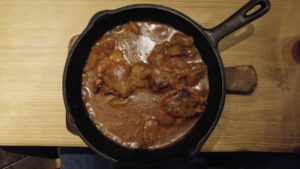
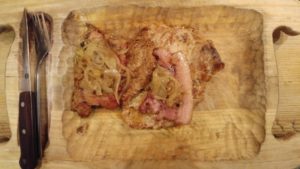
MEAT WITH Sauerkraut «bigos»
- Poland produces its own vodka, with the most expensive brand "BELVEDERE WODKA"And the most famous"WYBOROWA WODKA"And beers, like the "Zywiec Beer», the "news" and the "Ocosim».
- H «E.Wedel"Is the oldest chocolate and candy brand produced in Poland. The factory was established in 1851 in Warsaw, in the Praga district, by Karl Ernest Wedel. The original chocolatiers, Chocolate Lounges E. Wedel, located in Szpitalna Street 8, Warsaw.
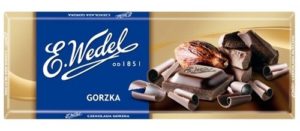
H Pawelek is a small chocolate - bar, cream-filled, coffee or alcohol and is present in all the kiosks.
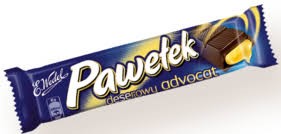
MARKETS
Poland you can buy chocolates E.Wedel, vodka, beers and amber. Amber consider clean Polish product with colors from light yellow to brown.
Stores Cepelia sell traditional products, such as amber, woodwork objects ceramics etc..
OR market Bakalarska, It is the largest outdoor market in Warsaw, which is longer than 500 stalls to buy that you can imagine. It is 5 km from the city center and located at the intersection of roads Al. Cracow and Bakalarski. Krakow and Bakalárska, opposite the Flower Market access bus, No. 116, 189, 401, N01, 141, 189, 384, 401, N38, N88, Hynka stop and tram lines 7, 9, 35 stop: Italy Hall, hours daily 5am - 5pm.).
USEFUL ADDRESSES IN POLAND
- Greece Embassy in Warsaw, ul Gornoslaska 35, tel. : 004822 6229460-1, tel. need : 0048600576854, www.mfa.gr/warsaw
- Embassy and Consulate of Poland in Greece, chrysanthemum 22, psychic, tel. : 210 6797700
- Warsaw International Airport «Modlin», area Generala Wiktora Thommee 1a, Nowy Dwor Mazowiecki, tel. +48 22 3151880, en.modlinairport.pl
- Krakow International Airport «John Paul II», Balice area , Captain Mieczyslaw Medweckiego 1 tel. + 48122955800
- www.ryanair.com, tel.: +48 703303033, Airport «Modlin»

